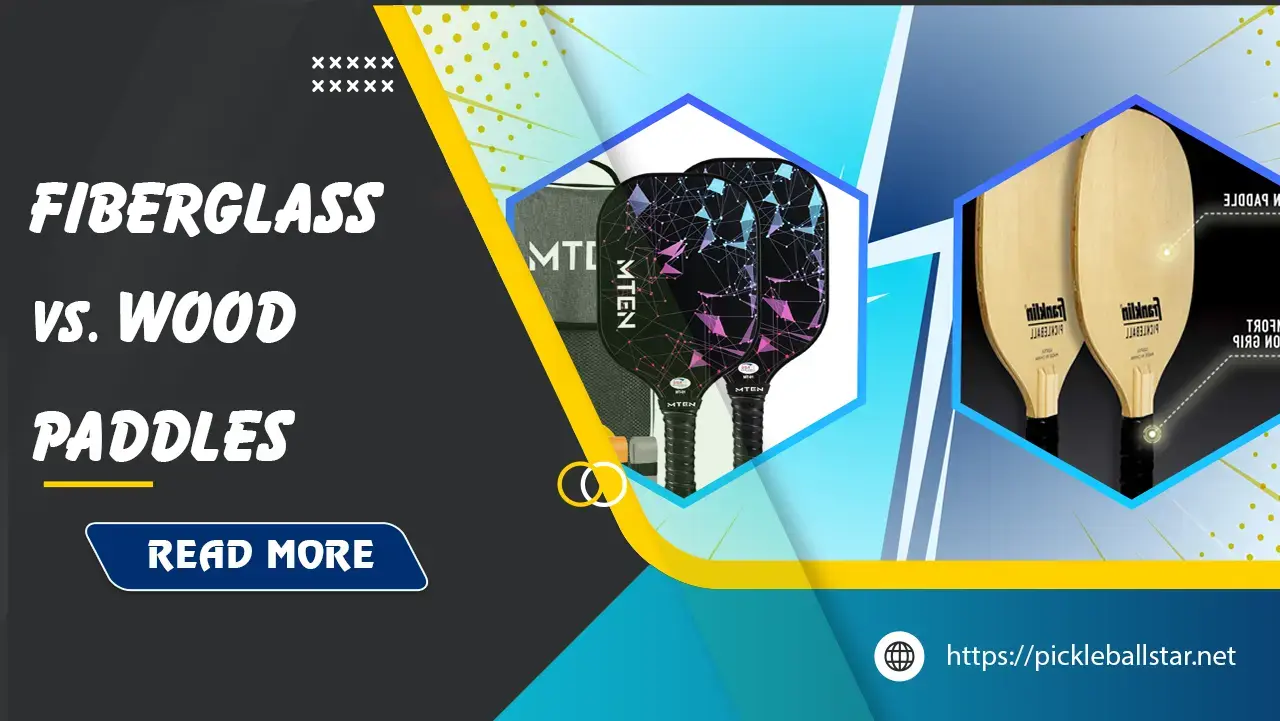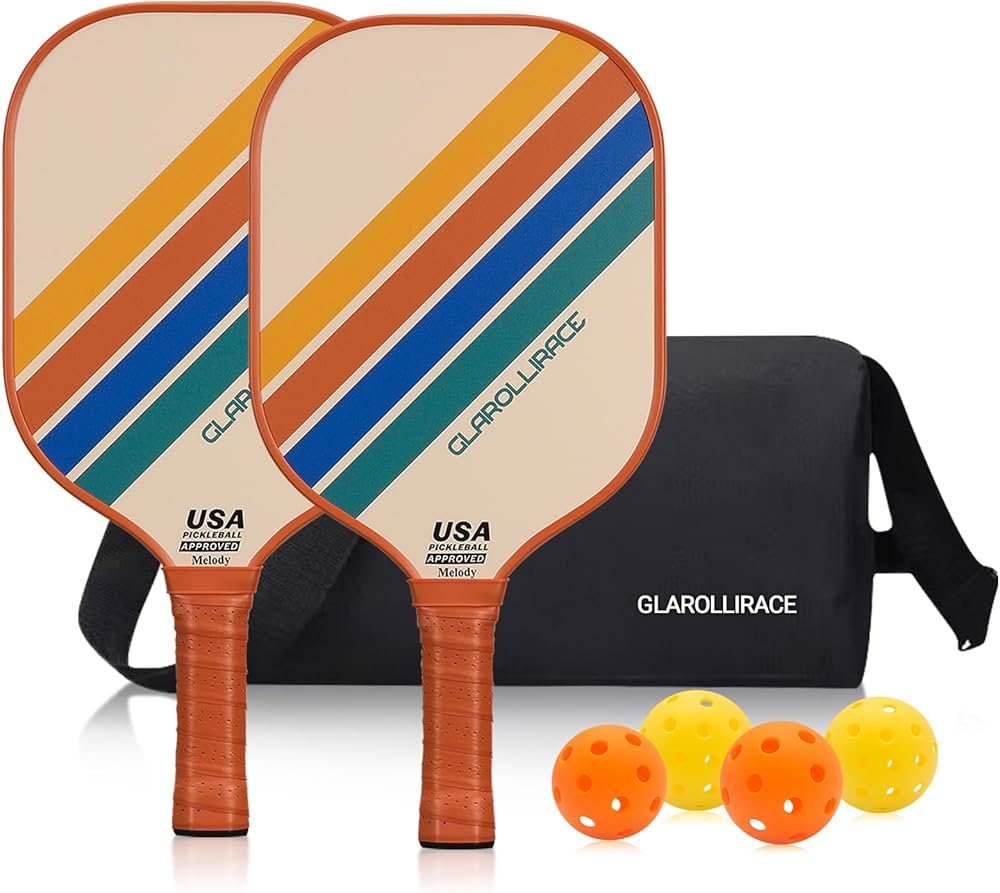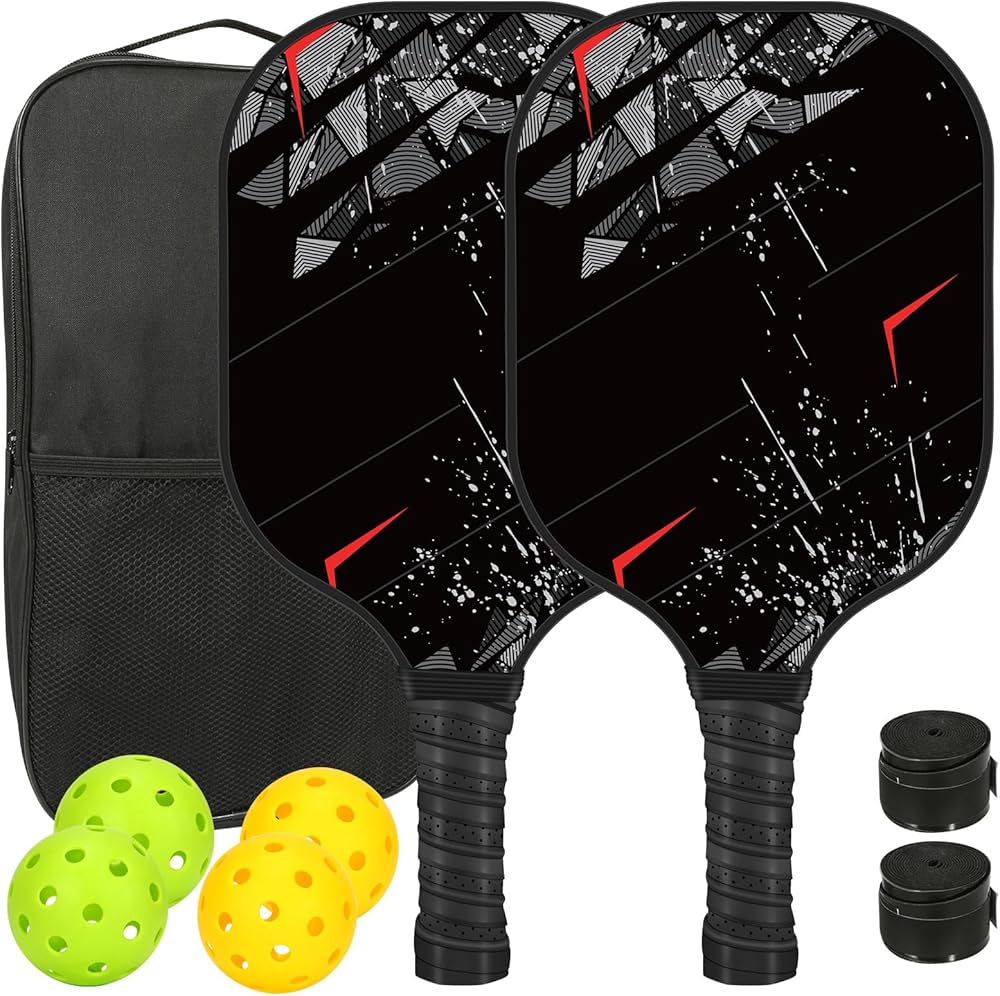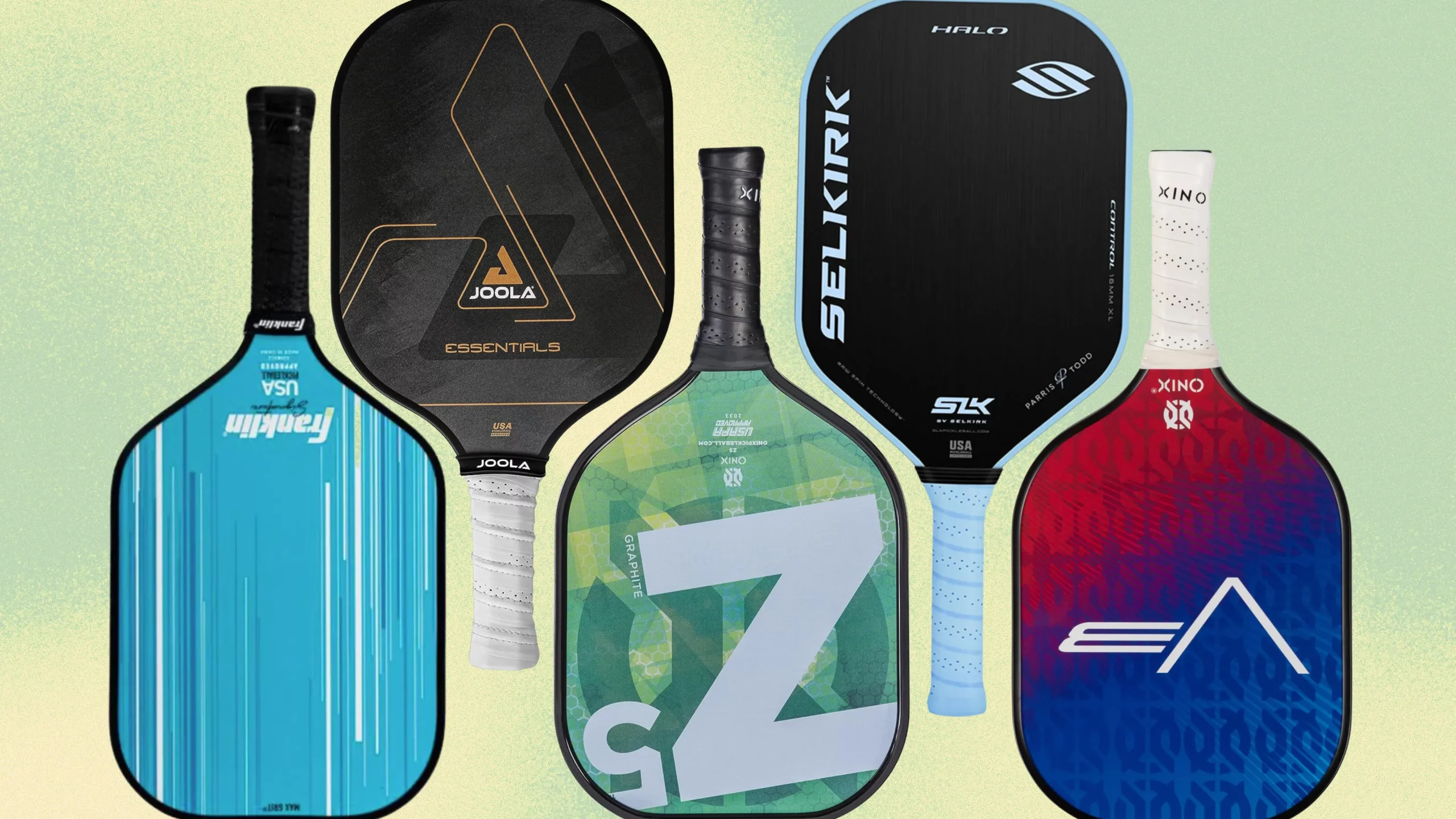Wood vs Fiberglass Pickleball Paddles: A Classic vs. Modern Showdown
Pickleball paddle materials have evolved over time, offering a range of options to suit different playing styles and preferences. Wood paddles represent a traditional choice, while fiberglass paddles showcase a more modern approach. Understanding the advantages and disadvantages of wood vs fiberglass pickleball paddles can help you make an informed decision about which one is best suited for your game.

While wood paddles offer a traditional feel and a unique playing experience, fiberglass paddles are known for their durability, affordability, and versatility. By carefully considering the nuances of each material, you can select the paddle that best complements your game and helps you unlock your full potential.
Wood Pickleball Paddles: A Classic Choice with a Unique Feel
The Traditional Appeal of Wood: A Natural and Responsive Paddle

Wood paddles evoke the roots of pickleball, offering a sense of nostalgia and a feel that’s hard to replicate with modern materials. Players often describe the sensation of using a wood paddle as akin to playing a classical instrument each stroke delivers a symphony of tactile feedback. This natural feel and responsiveness make wood paddles a favorite among those who appreciate the subtleties of the game.
For example, the satisfying “pop” sound of a wood paddle striking the ball can be compared to the crisp snap of a well-tuned guitar string. This sound is not merely auditory but also tactile, resonating through the player’s hand and offering instant feedback. This feedback helps players develop a delicate touch, essential for precise shots and effective net play, making the wood paddle an ideal choice for those who prioritize control over brute force.
Durability and Longevity: A Well-Crafted Paddle Can Last
Investing in a well-crafted wood paddle can be likened to acquiring a vintage watch timeless and built to last when properly maintained. High-quality wood paddles are often constructed from durable hardwoods such as maple and oak, which can endure the rigors of regular play. The longevity of these paddles, however, is contingent on diligent maintenance practices.
Although wood paddles are susceptible to wear and tear, their resilience can be enhanced through simple maintenance tasks, such as oiling and sanding. Just as a classic wooden boat requires regular varnishing to withstand the elements, a wood pickleball paddle benefits from occasional care to preserve its performance and appearance. When properly cared for, a good wood paddle can last for years, making it a worthwhile investment for traditionalists who value durability and a unique playing experience.
Yet, it is essential to recognize the limitations. While wood paddles are durable, they may lack the same level of robustness as modern composite materials. As with a treasured family heirloom, there’s a delicate balance between enjoying its use and maintaining its pristine condition to ensure it remains a reliable partner on the court.
Fiberglass Pickleball Paddles: A Durable and Affordable Choice

Durability and Affordability: A Reliable and Budget-Friendly Option
Fiberglass paddles stand out in the pickleball world for their optimal blend of durability and affordability, akin to the modern marvels of engineering that offer high performance without a prohibitive price tag. Constructed from layered fiberglass sheets, these paddles are designed to withstand substantial wear and tear, making them a popular choice for beginners and casual players.
Consider fiberglass paddles as the economy cars of the pickleball world not the fastest nor the most luxurious, but reliable and cost-effective. The durability of fiberglass paddles lies in their ability to absorb impacts that would potentially damage wood paddles. The layered construction ensures a robust product less prone to denting or cracking under pressure, providing a consistent playing experience over time.
Price is another compelling aspect. Fiberglass paddles are generally less expensive than their wood or advanced composite counterparts, making them accessible for a wider range of players. This financial feasibility allows newcomers to explore the sport without a significant initial investment, reducing the barriers to entry.
Versatility and Consistency: A Good All-Around Choice
One of fiberglass paddles’ most appealing attributes is their versatility. They are the Swiss army knives of pickleball paddles, catering to a range of playing styles and levels. Whether you are a beginner trying to find your groove or an intermediate player looking to refine your skills, fiberglass paddles offer a consistent feel and predictable response.
The uniformity in fiberglass paddles, achieved through precise manufacturing processes, ensures that every paddle offers the same weight and balance. Such consistency can be especially helpful for players focusing on honing their skills, as they can rely on their paddle to perform uniformly during each match.
Moreover, fiberglass paddles often feature a larger sweet spot compared to wood paddles. This means that even off-center hits can maintain decent power and control, akin to a well-designed tennis racquet that forgives minor missteps. This characteristic can be incredibly beneficial for players who are still mastering the intricacies of the game.
However, it’s worth noting that while fiberglass paddles provide a consistent performance, some players may miss the tactile feedback and vibration of wood paddles. The “hollow” feel of fiberglass can sometimes fail to provide the same level of engagement. Nonetheless, for those prioritizing durability, affordability, and versatility, fiberglass paddles stand as a formidable choice.
Wood vs Fiberglass Pickleball Paddles: Choosing the Right Paddle for You

Playing Style: Matching Paddle Material to Your Game
The journey to finding the perfect pickleball paddle can be likened to a quest for a tailor-made suit one must consider personal style and preferences. Your choice of Pickleball paddle material should align with your playing style, much like a musician selects an instrument that complements their music.
- Finesse players: If you’re someone who enjoys the art of precision and controlled shots, the natural responsiveness of wood paddles can enhance your game. The tactile feedback helps in refining touch, making wood paddles ideal for players who rely on strategic placements and soft shots.
- Power-driven players: If your style leans towards aggressive smashes and swift volleys, fiberglass paddles, with their lightweight and larger sweet spot, can facilitate those hard-hitting offensive plays. The extra power and reduced weight help in quick maneuverability, making them a preferred choice for dynamic players.
Skill Level and Experience: Considering Material for Different Players
Your skill level and experience are pivotal in choosing the right paddle, akin to selecting gear for a hiking trip based on whether you’re a novice or seasoned explorer.
- Beginners: Newcomers to pickleball often appreciate the balance between control and power offered by fiberglass paddles. Their affordability also allows beginners to get started without a hefty investment.
- Intermediate and advanced players: For seasoned players who have a well-defined playing style, the choice boils down to preference. Experienced players who value tradition and nuanced feedback might gravitate towards wood paddles. On the other hand, those prioritizing performance consistency and a modern playing experience may prefer fiberglass paddles.
Budget and Investment: Balancing Performance and Cost
Finding the right paddle is not just about performance but also entails practical considerations such as budget, similar to ensuring a financial plan while purchasing a car.
- Affordable options: Fiberglass paddles serve as a budget-friendly entry point, offering good performance without a significant investment. Their durability ensures cost-efficiency over time, making them an excellent choice for casual players and those new to the sport.
- Long-term investment: Wood paddles, often priced higher, offer a unique playing experience that some enthusiasts deem priceless. Their longevity, when coupled with proper maintenance, can make them a wise investment for dedicated players. This higher upfront cost can be offset by their enduring performance and sentimental value.
In conclusion, wood paddles and fiberglass paddles each have their merits. By evaluating your playing style, skill level, and budget, you can select a paddle that not only enhances your performance but also enriches your enjoyment of the game.
Frequently Asked Questions
Are wood paddles better for beginners?
While wood paddles offer a traditional feel and authentic playing experience, fiberglass paddles are often recommended for beginners due to their affordability and durability. The consistent performance and larger sweet spot of fiberglass paddles can help new players develop their skills without the need for frequent replacements or meticulous maintenance.
Can composite paddles replicate the feel of wood?
Composite paddles, which include fiberglass, can mimic some aspects of wood but often lack the tactile feedback and vibration that aficionados of wood paddles cherish. While fiberglass paddles offer consistency and durability, they cannot completely replicate the nostalgic and responsive feel of a well-crafted wood paddle.
Do professionals prefer wood or composite paddles?
Most professional pickleball players opt for composite paddles, favoring the enhanced performance, precision, and modern features they provide. Composite materials such as fiberglass and carbon fiber offer the power and maneuverability required at higher levels of play. However, some traditionalists and enthusiasts still favor wood paddles for recreational and casual play, valuing the connection to the sport’s origins.
Can I switch between wood and composite paddles easily?
Switching between wood and composite (fiberglass) paddles is possible, but it may require an adjustment period due to differences in weight, balance, and feel. Each material offers unique attributes wood provides more tactile feedback, while fiberglass offers power and consistency. Being adaptable and practicing with both can enhance your versatility as a player.
How do I maintain and clean wood and composite paddles?
- Wood paddles: Care includes occasional oiling with mineral oil to prevent the wood from drying out and sanding off any rough patches. Store them in a dry place to avoid warping.
- Fiberglass paddles: These require less maintenance and can be cleaned with a damp cloth. It’s advisable to avoid excessive exposure to extreme temperatures or humidity.
Is there a noticeable difference in performance between wood and composite paddles?
Yes, there is a significant difference in performance. Wood paddles offer a traditional, responsive feel with more tactile feedback but require more effort for powerful shots. Composite paddles, especially fiberglass, provide a lighter, more powerful, and consistent playing experience with a larger sweet spot, catering to modern playing styles.
Conclusion
Wood and fiberglass pickleball paddles offer distinct advantages and cater to different playing styles and preferences. By carefully considering your individual needs, playing style, and budget, you can make an informed decision about which material is the best fit for your game.
Exploring the world of wood and fiberglass paddles allows you to experience their unique feel and performance firsthand. Whether you choose the traditional charm and tactile responsiveness of wood or the modern durability and affordability of fiberglass, the right paddle can significantly enhance your enjoyment and performance on the court.
So, take your time to test different options, understand what resonates with your playing style, and make a choice that will not only help you achieve your pickleball goals but also maximize your enjoyment of this wonderful sport. Happy playing!
